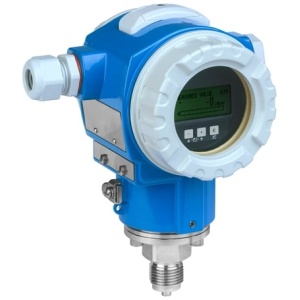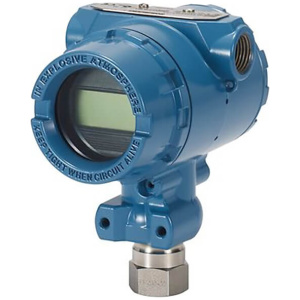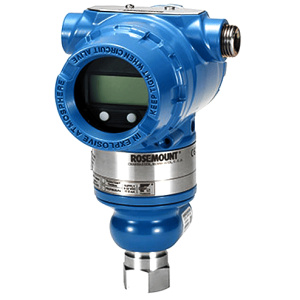Absolute pressure transmitters are precision measurement instruments that measure pressure relative to a perfect vacuum reference point, converting pressure readings into standardized electrical signals (4-20mA or digital outputs) without being influenced by atmospheric pressure changes or altitude variations, making them ideal for vacuum systems, gas processing, and meteorological applications.
Visit SCS-Instrument Supplier today to explore our comprehensive selection of absolute pressure transmitters from leading brands, available in various specifications to meet your exact measurement needs.
Absolute Pressure Transmitters
Absolute Pressure Transmitters
Absolute Pressure Transmitters
Absolute Pressure Transmitters
Absolute Pressure Transmitters
Absolute Pressure Transmitters
Absolute Pressure Transmitters
Absolute Pressure Transmitters
Yokogawa EJA510E In-Line Mount Absolute Pressure Transmitter
How Absolute Pressure Transmitters Work
An absolute pressure transmitter measures pressure relative to a perfect vacuum, providing a reference point of zero psi (0 bar). This reference is maintained by an internal sealed chamber, which ensures that any pressure registered by the transmitter is compared against an absolute zero baseline. The result is a stable, accurate measurement unaffected by changing atmospheric conditions—a critical requirement in many precision-driven industries. Within an absolute pressure transmitter, a sensing element (often a piezoelectric or capacitive sensor) detects minuscule changes in pressure on one side of a diaphragm, while the other side remains exposed to a vacuum seal. Any fluctuation in process pressure causes the diaphragm to flex. The transmitter’s electronics then convert these mechanical changes into standard electrical signals (e.g., 4–20 mA or digital outputs). By eliminating atmospheric variability, absolute pressure transmitters help ensure that your readings remain consistent, even if barometric pressures rise or fall dramatically.Key Components of an Absolute Pressure Transmitter
- Vacuum-Sealed Reference A key difference from gauge or differential transmitters is the permanently sealed, evacuated chamber used as the zero reference point.
- Sensing Diaphragm This thin membrane flexes in response to process pressure. In absolute transmitters, one side faces the process medium, while the other side is locked against the internal vacuum.
- Sensor Element Common technologies include strain gauges, piezoresistive circuits, or capacitive sensors. They convert mechanical deformation into an electrical output for further processing.
- Electronics Housing Robust enclosures protect circuits from dust, humidity, and temperature extremes. This housing also contains display modules and communication boards.
Absolute Pressure Transmitters Offered by scs-Instrument
As a specialized distributor of high-quality industrial instrumentation, scs-Instrument proudly sells a diverse range of absolute pressure transmitters. Our portfolio features trusted brands known for performance, longevity, and consistent accuracy.Rosemount 3051T Absolute Pressure Transmitter
- High-Precision Diaphragm providing exceptional stability under fluctuating process conditions
- Durable Construction designed for harsh environments and corrosive media
- Flexible Installation with multiple mounting configurations and communication protocols
Rosemount 2051T Absolute Pressure Transmitter
- Compact, Cost-Effective solution without sacrificing accuracy or stability
- Advanced Electronics offering intuitive setup and local interface options
- Sealed Reference Chamber ensuring consistent readings, irrespective of external atmospheric changes
Rosemount 2088 Absolute Pressure Transmitter
- Lightweight Body ideal for space-constrained setups and retrofits
- Dependable Performance in demanding applications, including high-temperature or corrosive streams
- Customizable Range supporting a variety of industrial processes and vessel sizes
Rosemount 3051S Absolute Pressure Transmitter
- Scalable Platform enabling expansions or upgrades to meet evolving process needs
- Premium Sensor Technology delivering best-in-class measurement stability
- Diagnostic Capabilities that simplify predictive maintenance, reducing downtime
Yokogawa EJA510E Absolute Pressure Transmitter
- Robust Diaphragm Design suitable for high-temperature or high-pressure scenarios
- Rapid Response guaranteeing accurate measurements in rapidly changing applications
- Digital Intelligence supporting advanced protocols for real-time data analytics
Benefits of Using Absolute Pressure Transmitters
- Precision in Changing Conditions They eliminate the need to account for local atmospheric variations, minimizing potential sources of error.
- Enhanced Process Consistency By measuring against a stable vacuum reference, these devices help maintain consistent control in critical processes.
- Wide Application Range Suitable for everything from vacuum processes in pharmaceutical production to tracking absolute pressures in refineries and food processing systems.
- Reduced Maintenance High-end models often include self-diagnostics and robust diaphragms, minimizing downtime and service costs.
- Regulatory Compliance Accurate absolute pressure data is crucial in industries governed by strict environmental or safety regulations.
Industries & Applications
Absolute pressure transmitters excel in a variety of settings where barometric fluctuations can significantly influence readings. Some of the industries and applications they serve include:- Oil & Gas: Monitoring sealed process vessels and vacuum distillation columns
- Food & Beverage: Ensuring hygienic conditions in vacuum-packed product lines
- Petroleum Refining: Tracking reactor and separator pressures requiring accurate vacuum-level measurement
- Wastewater & Sewage: Managing gas processing units and odor control systems
- Chemical & Pharmacy: Controlling precise vacuum conditions in research labs and manufacturing facilities
Troubleshooting Absolute Pressure Transmitters
While absolute transmitters are built for reliability, occasional issues may arise:- Fluctuating Readings: Could stem from damaged diaphragms or excessive vibration near the sensor.
- Calibration Drift: Check the stability of your reference vacuum or any signs of leakage in the housing.
- No/Erratic Output: Verify wiring connections, examine the power supply’s voltage, and ensure there are no shorts or open circuits.
- Corrosion or Build-Up: Regularly inspect the transmitter’s process connections and diaphragms for chemical deposit or residue accumulation.










